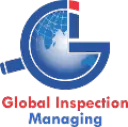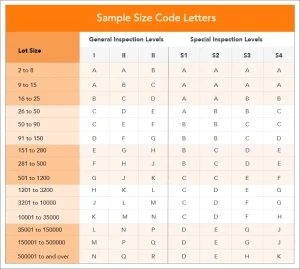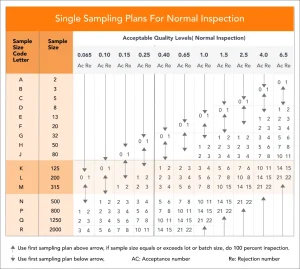In today’s competitive business environment, quality management is of utmost importance for organizations to ensure that their products or services meet the highest standards. Audit and inspection are two essential processes that organizations use to assess their quality management practices and ensure compliance with predetermined standards. Although people often use these terms interchangeably, it is essential to note that these are distinct processes with significant differences in their nature, scope, outcomes, and complexity. This blog will explore the key differences between audit and quality control inspection to help organizations understand their unique characteristics and choose the right approach for their quality management needs.
What Does Audit Mean?
An audit is a systematic and independent examination of an organization’s financial records, internal controls, and operational processes to determine whether they comply with established policies, procedures, and regulations. Internal or external auditors, trained and certified, conduct audits to assess an organization’s financial and operational performance.
Audits typically involve a comprehensive review of an organization’s financial statements, accounting records, internal controls, and other relevant documents. Auditors collect evidence, conduct interviews, and perform analytical procedures to evaluate the financial information’s accuracy, completeness, and reliability. The objective of an audit is to provide an opinion on the fairness and reliability of an organization’s financial statements and to identify areas of improvement in internal controls and operational processes.
Audits can be classified into various types, such as financial audit, operational audit, compliance audit, and information technology audit, depending on the nature and scope of the audit. Organizations conduct ethical audits periodically, usually annually, to ensure compliance with legal requirements, internal policies, and industry regulations.
What is Quality Inspection?
On the other hand, quality inspection examines products or services to determine whether they meet the specified quality standards and requirements. They are typically conducted during different stages of the production process or before shipment to customers. Internal or external inspectors, who are trained and certified, perform inspections to assess the quality of products or services.
Service and product inspections involve checking the physical characteristics, functionality, performance, and other attributes against predetermined quality standards or specifications. Inspectors use various tools and techniques, such as visual inspection, measurement, testing, and sampling, to determine whether products or services meet the required quality criteria. The objective of an inspection is to identify defects, non-conformities, or discrepancies in products or services and take corrective actions to ensure that they meet the specified quality standards.
An inspection can be classified into different types, such as incoming inspection, in-process inspection, final inspection, and pre-shipment inspection methods, depending on when they are performed during production. Independent third-party inspection agencies can also conduct checks to provide unbiased assessments of the quality of products or services.
Key Differences between Audit and Inspection
Audit and inspection are not merely similar, but fundamentally distinct processes with crucial differences. While they both involve evaluating products or services, audit and inspection have unique characteristics that set them apart from each other. Let’s take a look at audit vs inspection.
Inspection is an action, while an audit is a process: Inspection is a focused action that involves evaluating products or services against established quality standards or specifications. It serves as a point-in-time assessment, aimed at identifying any defects or non-conformities in the products or services being evaluated.
On the other hand, an audit is a systematic process of evaluating an organization’s financial records, internal controls, and operational processes. It involves a comprehensive review of financial information, internal policies, and industry regulations over a period of time. Auditors collect evidence, conduct interviews, and perform analytical procedures to assess an organization’s financial and operational performance.
Inspection is qualitative, while an audit is quantitative: Inspection zeroes in on the physical characteristics, functionality, performance, and other vital attributes of products or services. It employs visual inspection, meticulous measurement, rigorous testing, and thoughtful sampling to determine whether they meet the required quality criteria. The outcome is usually qualitative, clearly indicating whether products or services pass or fail based on predetermined quality standards.
On the other hand, an audit focuses on financial records, internal controls, and operational processes of an organization, which are mostly quantitative. Auditors review financial statements, accounting records, and other financial data to assess financial information’s accuracy, completeness, and reliability. The outcome of an audit is typically quantitative, providing a detailed analysis of an organization’s financial and operational performance, identifying areas of improvement, and providing recommendations for corrective actions.
Inspection is like a glance, audit a deep dive:
Inspection is a relatively straightforward process that involves checking products or services against predetermined quality standards or specifications. Trained inspectors typically carry out inspections by following predefined procedures and criteria. They may utilize various tools and techniques, such as visual inspection, measurement, testing, and sampling. However, the process is generally straightforward, clearly focusing on identifying defects or non-conformities.
On the other hand, auditing is a complex process that requires in-depth knowledge of financial and operational concepts, principles, and regulations. Auditors need to thoroughly understand an organization’s financial records, internal controls, and operational processes and use professional judgment to assess their effectiveness. Auditors may also need to perform extensive data analysis, conduct interviews, and review a large volume of documents, making the audit process more intricate and time-consuming compared to the inspection.
The audit gives recommendations, while the inspection creates action: Another difference is the outcomes. An audit typically results in a formal report that includes the auditor’s opinion on an organization’s financial statements and provides recommendations for improving internal controls and operational processes. The purpose of the recommendations is to assist organizations in identifying and addressing weaknesses or deficiencies in their financial and operational systems to improve their overall performance.
On the other hand, the outcome of an inspection is usually an action or decision regarding the quality of products or services based on predetermined standards. Products or services are considered acceptable and released for further processing or shipment if they pass the inspection. However, if products or services do not pass the inspection, they are considered non-conforming, and prompt corrective actions must be taken to address the identified defects.
Conclusion
Both factory audit and inspection play critical roles in ensuring quality management within an organization. They provide valuable insights and recommendations for improving processes, identifying non-conformities, and enhancing overall performance. Organizations must choose the right partner for audit and inspection to ensure that their quality management processes are robust, reliable, and effective.
Global Inspection Management (GIM) is a trusted audit and inspection service provider offering expertise, experience, comprehensive services, advanced tools and techniques, customized solutions, independent and unbiased assessments, timely and efficient services, and global coverage. With our professional audit and inspection services, you can strengthen your business’ quality management practices, improve operational efficiency, and enhance customer satisfaction.
So, whether you need financial audits, operational audits, compliance audits, incoming inspections, in-process inspections, final inspections, pre-shipment inspections, or other quality management services, GIM can be your reliable partner in ensuring your organization meets the highest standards of quality and performance.
Choose GIM for your audit and inspection needs, and experience the benefits of professional, reliable, and comprehensive quality management services. Contact our team today to learn more about how we can support your organization’s audit and inspection requirements.


